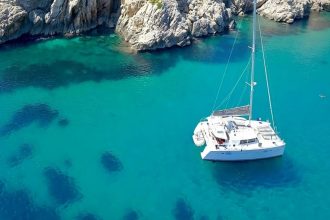The ocean’s depths, a mesmerizing realm of vibrant corals and enigmatic creatures, beckon adventurers globally. For centuries, humanity has dreamt of prolonged immersion in this aquatic wonderland, a dream now vividly realized through the marvel of scuba diving. Yet, beneath the surface of every breathtaking descent lies a sophisticated science: the carefully calibrated breath of life supplied by cylinders. This isn’t merely about holding your breath; it’s about mastering the very air you breathe, a silent, unseen partner in your underwater odyssey.
Traditionally, recreational divers have relied on compressed atmospheric air, a seemingly straightforward mixture of roughly 21% oxygen and 79% nitrogen. While incredibly effective for countless shallow to moderate dives, this standard blend presents inherent physiological challenges. As a diver descends, the increasing ambient pressure compresses these gases, leading to higher partial pressures within the body. Nitrogen, an inert gas, can become problematic at depth, causing “nitrogen narcosis”—a disorienting effect akin to intoxication—and necessitating careful management of decompression limits to prevent decompression sickness, often referred to as “the bends.” The pursuit of deeper, longer, and safer dives has, therefore, propelled innovators to explore a remarkable spectrum of alternative gas mixtures.
Essential Scuba Diving Gas Mixtures
| Gas Mixture | Primary Components | Typical Use | Key Benefit/Limitation |
|---|---|---|---|
| Air | ~21% Oxygen, ~79% Nitrogen | Recreational diving (0-40m/130ft) | Widely available, inexpensive. Risk of nitrogen narcosis and decompression sickness at depth. |
| Nitrox (Enriched Air Nitrox ― EANx) | 22-40% Oxygen, balance Nitrogen | Recreational diving, extended bottom times, reduced surface intervals | Increased no-decompression limits, reduced nitrogen uptake. Oxygen toxicity limit at shallower depths. |
| Trimix | Oxygen, Nitrogen, Helium | Technical diving, deep wreck/cave diving (>40m/130ft) | Mitigates nitrogen narcosis and oxygen toxicity at depth. Complex blending, expensive, requires specialized training. |
| Pure Oxygen | 100% Oxygen | Decompression stops, accelerated decompression, medical recompression | Maximizes nitrogen off-gassing. Highly toxic at depth (shallow oxygen toxicity limits). |
For more comprehensive information on diving gases and safety protocols, consult reputable organizations like PADI (Professional Association of Diving Instructors).
Nitrox: The Game Changer for Recreational Divers
Enter Nitrox, often referred to as Enriched Air Nitrox (EANx), a groundbreaking innovation revolutionizing recreational diving. By simply increasing the percentage of oxygen beyond air’s standard 21%—typically to 32% or 36%—and consequently reducing the nitrogen component, divers can significantly extend their no-decompression limits and shorten surface intervals. This seemingly subtle alteration yields profoundly positive physiological effects, allowing for longer explorations of stunning reefs and wrecks without incurring excessive nitrogen loading. It’s akin to upgrading from a standard vehicle to a high-performance model, offering enhanced efficiency and reduced wear on the system, in this case, the human body.
Trimix: Conquering the Abyss
For those pushing the very boundaries of human exploration into the abyssal zones, the limitations of Nitrox become apparent. Here, at extreme depths, oxygen itself becomes toxic, and nitrogen narcosis intensifies to a dangerous degree. This is where Trimix, a sophisticated blend of oxygen, nitrogen, and crucially, helium, steps onto the stage. Helium, being an inert gas with a lower molecular weight than nitrogen, effectively mitigates the narcotic effects experienced at greater pressures, allowing divers to maintain clarity of thought and decision-making capabilities in environments where even minor errors can be catastrophic. Crafting the perfect Trimix blend is a meticulous art, demanding precision and a deep understanding of gas physics, often tailored to specific depth and dive profiles.
The Future of Breath: Expert Insights and Innovations
Leading organizations such as TDI (Technical Diving International) have been instrumental in developing rigorous training programs, certifying thousands of technical divers proficient in these advanced gas mixtures. Dr. John Clarke, a renowned hyperbaric physiologist, often emphasizes, “The future of deep exploration hinges on our mastery of gas physiology. Each blend isn’t just a mixture; it’s a carefully engineered solution to a specific environmental challenge.” Indeed, from scientific expeditions uncovering new species in deep-sea trenches to the perilous recovery of historical artifacts from sunken vessels, specialized gas blends are the unsung heroes. Looking forward, ongoing research into exotic gas combinations and rebreather technologies promises even greater autonomy and efficiency for divers, potentially unlocking secrets of the ocean previously deemed unreachable.
Embracing the Depths with Confidence
The journey into the underwater world is a testament to human ingenuity, continuously refined by an evolving understanding of physiology and physics. From the ubiquitous compressed air to the meticulously crafted Nitrox and the complex multi-gas blends of Trimix, each composition offers a unique gateway to deeper, longer, and safer adventures beneath the waves. Embracing these advancements, while always prioritizing training and safety, empowers us to explore our planet’s last great frontier with unparalleled confidence and wonder. The future of diving, breathing innovation with every carefully planned descent, promises an ocean of discovery.






